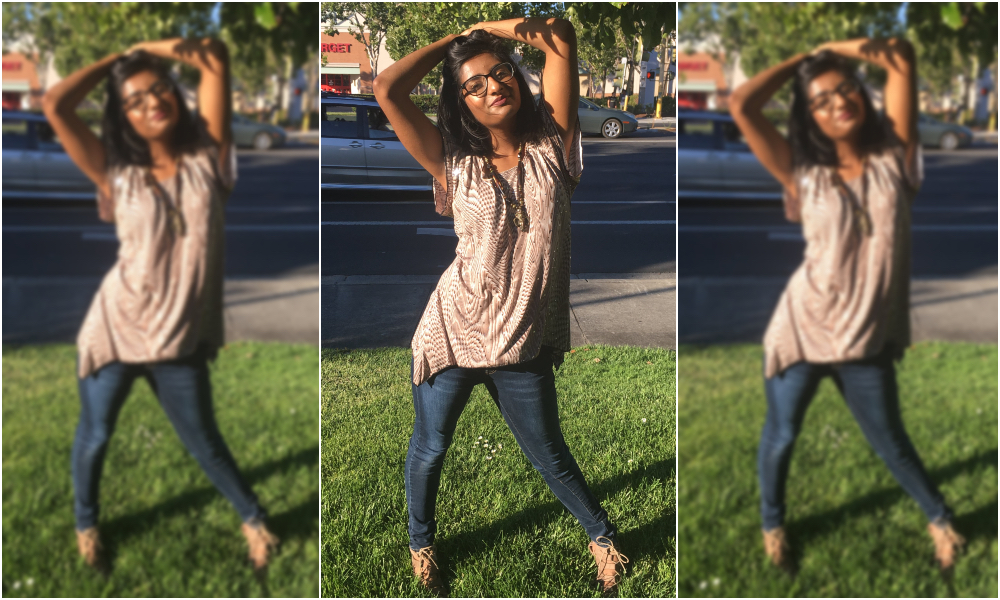
Have you ever opened a magazine and seen a picture of a model and wished you could look like them? Have you ever watched a TV show, aspiring to become as “beautiful” as your favorite actor or actress?
What is beauty? And who is beautiful?
Every society has its own definition of beauty, but this definition and the ideals that come with it affect many in the wider population in their relationship with their physical body and their overall self-esteem.
The society I live in has led me to see “beautiful” as a tall, white, skinny, young girl, as though we can all control our height and our skin color and our weight and our age to fit this picture.
The society I live in has led me to wish I was whiter, to wish I was skinnier, to wish my skin was clearer, to wish my nose was smaller, to wish my body had less hair, and far more. The society I live in has led me to spend hundreds of dollars a year on yanking hair out of my face in the hopes of becoming more “beautiful,” to wish I could eat less to become skinnier. The society I live in once led me to exercise far too often and intensely in the hopes that I would lose weight, to once cry while I wondered I was unlucky enough to be born the darkest member of my family.
So am I not beautiful? Am I ugly because I was born with a certain body type, acne-prone skin, dark skin and thick hair? Am I ugly because I don’t fit an arbitrary definition of “beautiful” that so few members of our world ever could?
As a fashion and makeup lover, I’ve been asked multiple times what my definition of beauty is, and after so long, I’ve finally found my answer.
The definition of beauty is whatever look makes a person happy.
Would you feel most confident if you wore a full face of makeup every day? Would you feel happiest if you left the house in sweats and a messy bun? Would you feel most comfortable after you got lip fillers?
Does planning outfits give you a sense of adrenaline and exhilaration? Does washing your hair once a week make your days easier than washing it every other day? Does posting five selfies in a row on Instagram give you confidence?
We live in a world that teaches children from a young age to hate the person they see in the mirror. We live in a society that profits off of our population despising themselves, especially in the unachievable ideals set for women, but all genders deal with their own body image issues.
Men and women alike are affected by the surplus of eating disorders in our society, like the eating disorder that I am still battling after seven years because, at 10, I was called fat and society told me that I’m not worthy of basic love and respect if I’m considered “fat.” To discuss the dysphoria and constant discomfort, to say the absolute least, that affects the trans and gender non-conforming communities every day is a topic for an entirely different article.
Three years ago, my sister wrote an article published in this same magazine titled, For My Little Sister (And All of the Girls Like Her), though I have since realized I am not a girl, but gender-fluid. Regardless, no matter how many times I open that article, I cry every time.
I cry for the version of me that despised myself because of the subtle messages of hate society sent me, and still attempts to send me. I cry for the younger population who I see growing up with not only these same unachievable and harmful ideals, but with even more.
I cry for those who like me who don’t fit the standard definition of “beauty” and have to endure the hateful and negative reactions of others, for those who are forced to become the “token brown person” or the “token fat person” to change society instead of just living their lives.
But once in a while, I look at the world around me and smile. I smile because of those as brave as my sister who wrote an article challenging the negatives of our world. I smile when I see those who don’t fit these ideals, whose Instagram comments are filled with hate, but who are still laughing and smiling and loving the skin they were born in.
I smile when I go about my day and I see someone confident in their own skin, someone happy with who they are. I smile because genuine happiness is my definition of beauty.
So to those of you who were looking for someone to speak up and tell you that you’re beautiful however you want to be, here is that message.
To those of you who love makeup and fashion and want to spend hours on it every single day, I urge you to do it. To those of you who couldn’t care less and want to leave the house in your pajamas, I encourage you to do it. To you who’s been questioning posting that one selfie, I beg that you do it.
To those of you still finding the form of expression that brings you happiness, I plead that you choose that option—not the option to conform to an archaic definition of beauty at the cost of your health and happiness.
So to everyone who has asked me what I view as beauty: I view you and your happiness as beauty.




